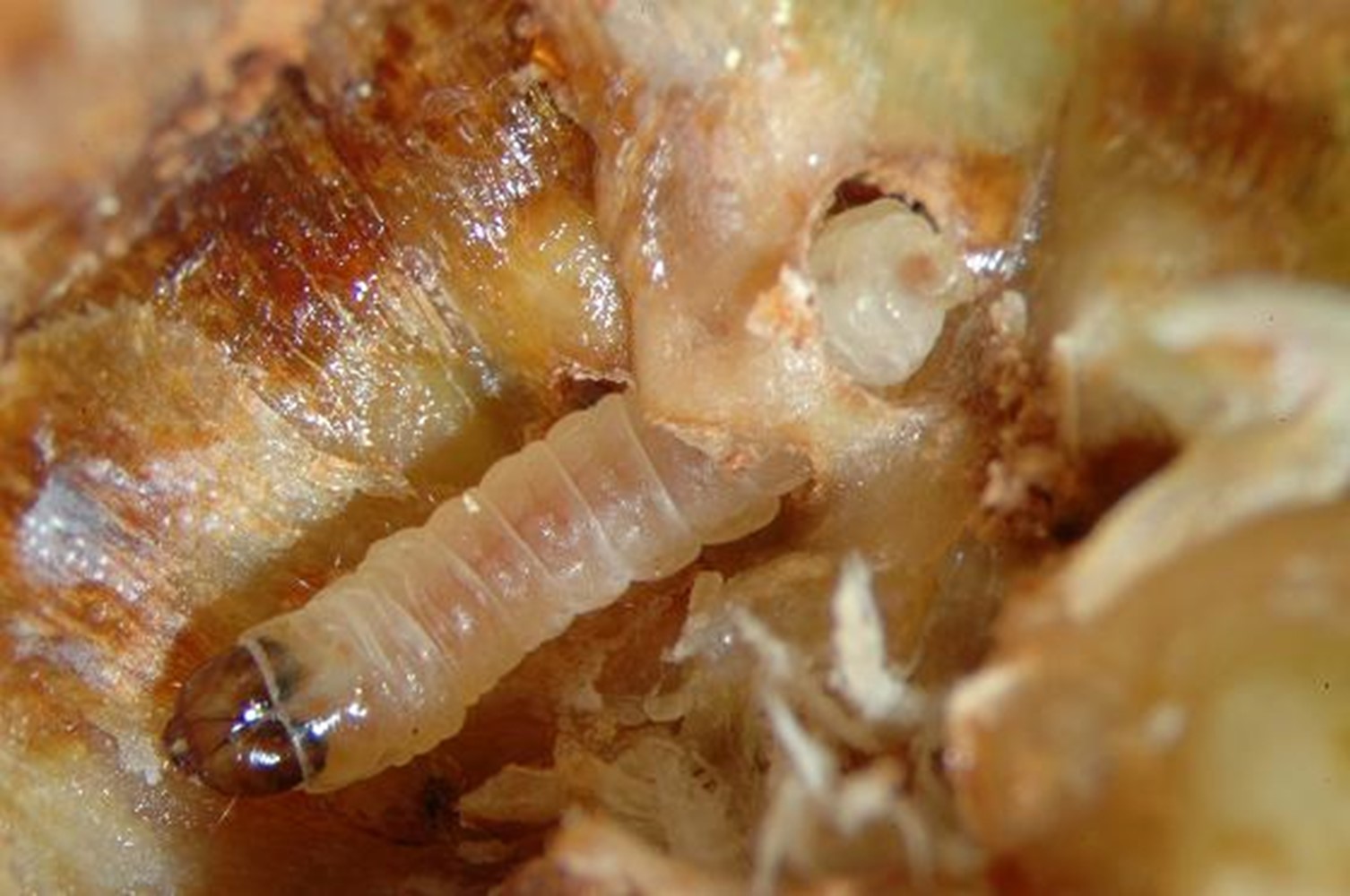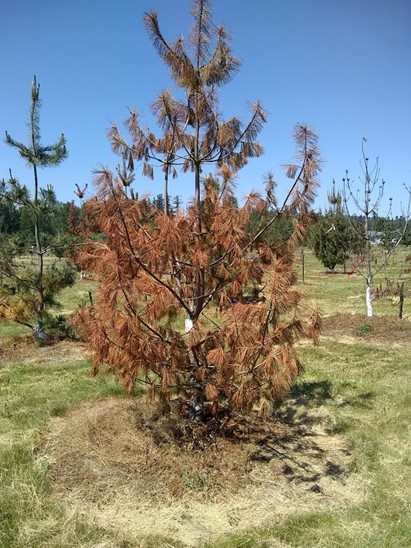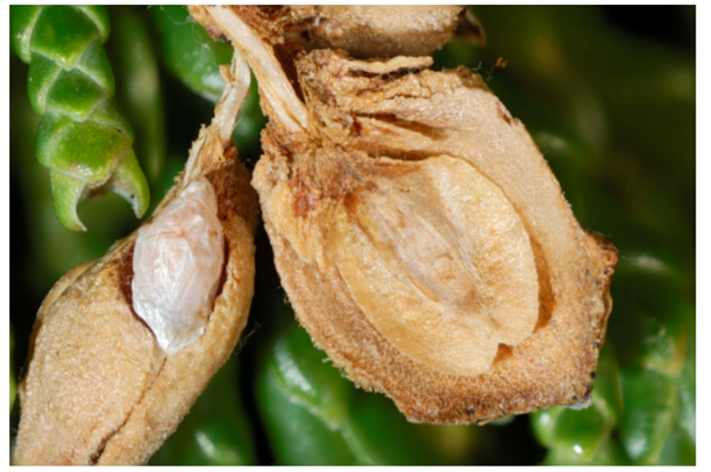Seed orchard pest management
Just as in any other crop species, conifer orchards growing cones for seed need to manage pests and diseases. Pests can cause damage by directly feeding upon cone crops. They may impact the overall health of the orchard trees and may even cause mortality of trees in the orchard.
Crop loss due to pests and disease can have a major impact on orchard revenues. Losses in production at the seed orchard stage can also impact downstream seed users and reforestation goals, if the demand for seed cannot be met.
On this page
- Pest Management Program objectives
- Examples of seed orchard pest and disease impacts
- Pest management resources
Pest Management Program objectives
- Provide access to pest management information and guidance for seed producers in B.C.
- Co-ordinate research on pest management strategies for issues impacting B.C. seed orchards
- Continually improve pest and disease monitoring and management practices in conifer seed orchards
- Assist orchard managers with crop monitoring, pest emergencies and other pest-based issues
- Develop extension material for the B.C. seed production community
The provincial cone and seed pest research program works with, and applies results to, both public and private seed orchards. This helps protect B.C.’s seed orchard investment, thereby enhancing reforestation investments and goals.
Research to improve pest management practices in the province is done with input and support from partners in the seed orchard community, other levels of government, academia scientists, and colleagues from other jurisdictions and industries.
Examples of seed orchard pest and disease impacts
Coneworm
In 2004, the Douglas-fir coneworm (Dioryctria abietivorella) caused seed losses in interior spruce of more than $600,000.
Right: Fir coneworm larva tunneling through a spruce cone, eating seeds as it goes.

Root rot
Mortality of trees such as western white pine and larch in provincial orchards due to infestation with root rot pathogens has resulted in substantial loss of revenue and reduced seed availability over the operational cycle of the impacted orchards.
Right: A western white pine tree that has been killed by infection with root rot pathogen Phytophthora spp.

Midge
Annual losses due to Western red cedar cone midge (Mayetiola thujae) can be up to $50,000 per orchard in a heavily impacted year.
Right: A western red cedar cone infested with the midge (left), and a healthy western red cedar cone (right)

Seed bug
Right: Western conifer seed bug (Leptoglossus occidentalis) feeds by inserting its syringe-like mouthparts into a cone and sucking nutrients from the seeds growing within.

